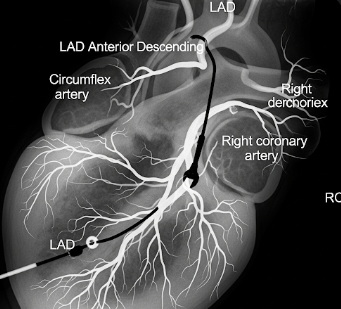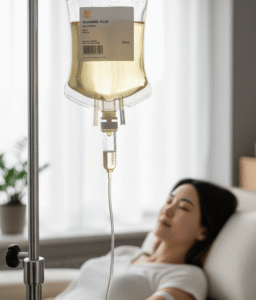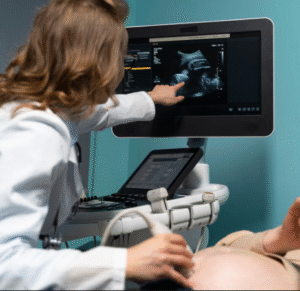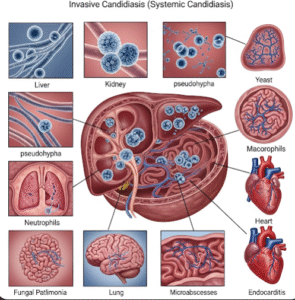Overview
A coronary angiogram is a diagnostic imaging procedure used to visualize the coronary arteries, the blood vessels supplying the heart. It helps identify blockages, narrowing (stenosis), or other abnormalities that could lead to heart attacks, angina, or other cardiac complications.
In South Korea, coronary angiograms are performed in state-of-the-art cardiac catheterization labs by experienced interventional cardiologists. Modern imaging systems provide high-resolution, real-time images, enabling accurate diagnosis, treatment planning, and intervention if necessary. South Korean hospitals combine advanced technology with expert care to ensure safety, precision, and minimal discomfort.
What is a Coronary Angiogram?
A coronary angiogram involves injecting a contrast dye into the coronary arteries and taking X-ray images to identify abnormalities.
Key purposes include:
- Detecting narrowed or blocked coronary arteries
- Evaluating chest pain, shortness of breath, or abnormal stress tests
- Planning angioplasty, stenting, or coronary artery bypass surgery
- Assessing heart function after a heart attack
Key components of the procedure:
- Catheter: A thin, flexible tube inserted through the groin (femoral artery) or wrist (radial artery)
- Contrast dye: Makes arteries visible on X-ray
- Fluoroscopy: Real-time imaging to track the catheter and blood flow
What are the Benefits?
A coronary angiogram provides critical insights for heart health:
✔ Detects blockages or narrowing of coronary arteries early.
✔ Guides interventional procedures like stent placement or angioplasty.
✔ Helps prevent heart attacks and other serious cardiac events.
✔ Minimally invasive with relatively short recovery time.
✔ Provides accurate diagnosis for personalized treatment planning.
Procedure Details
1) How should I prepare for a Coronary Angiogram?
- Medical assessment: Blood tests, ECG, echocardiogram, and medical history evaluation.
- Medication review: Blood thinners, diabetes medications, or other cardiac drugs may require adjustment.
- Fasting: Typically 6–8 hours prior to the procedure.
- Consent: Explanation of procedure, risks, benefits, and possible interventions.
- Arrange support: Transportation post-procedure as sedation or mild anesthesia may be used.
South Korean cardiac centers provide detailed pre-procedure counseling and preparation instructions to ensure safety and effectiveness.
2) What happens during the Coronary Angiogram?
- The patient is positioned on a cardiac catheterization table.
- Local anesthesia is administered at the insertion site (groin or wrist).
- A catheter is guided through the artery to the coronary vessels.
- Contrast dye is injected and X-ray images are taken to visualize the arteries.
- If blockages are detected, angioplasty or stent placement may be performed immediately.
- The procedure typically lasts 30–60 minutes, depending on complexity.
South Korean cardiologists emphasize precision, real-time imaging, and patient comfort throughout the procedure.
3) What happens after a Coronary Angiogram?
- Patients are monitored in the recovery area for 1–4 hours.
- Pressure is applied to the insertion site to prevent bleeding; bandages or compression devices may be used.
- Mild soreness at the insertion site is common.
- Patients are advised to avoid heavy lifting or strenuous activity for a few days.
- Results are discussed with the cardiologist, and further treatment plans are provided.
Risks / Benefits
Potential Risks:
- ➤ Bleeding or hematoma at the catheter insertion site
- ➤ Allergic reaction to contrast dye
- ➤ Irregular heart rhythms (arrhythmias)
- ➤ Heart attack or stroke (rare)
- ➤ Kidney complications due to contrast in patients with pre-existing kidney issues
Major Benefits:
- ✔ Early detection of coronary artery disease
- ✔ Minimally invasive with high diagnostic accuracy
- ✔ Guides life-saving interventions like angioplasty or stenting
- ✔ Prevents future cardiac complications
- ✔ Expert care in South Korea ensures minimal risk and high safety
Recovery and Outlook
- Immediate post-procedure: Monitoring of vital signs and insertion site.
- First 24 hours: Avoid strenuous activity; monitor for bleeding, pain, or swelling.
- Follow-up: Regular cardiac check-ups, lifestyle modification, and medication management as prescribed.
- Long-term outlook: Early diagnosis and intervention improve heart health, reduce risk of heart attacks, and enhance quality of life.
South Korean hospitals provide structured follow-up programs, cardiac rehabilitation, and long-term monitoring to ensure optimal outcomes.
When To Call the Doctor
Contact your cardiologist immediately if you notice:
- ➤ Excessive bleeding or swelling at the insertion site
- ➤ Severe chest pain or shortness of breath
- ➤ Fever or signs of infection
- ➤ Dizziness, fainting, or unusual heart rhythms
- ➤ Allergic reactions or persistent discomfort
Best Korea Option / Process
South Korea offers world-class coronary angiogram services due to:
- Highly skilled interventional cardiologists
- Advanced cardiac catheterization labs with high-resolution imaging
- Minimally invasive procedures with rapid recovery
- Comprehensive pre- and post-procedure care, including cardiac rehabilitation
- International patient support, including translators, accommodation, and follow-up
- Affordable costs with top-tier quality
Top hospitals for coronary angiogram in Korea:
- Samsung Medical Center
- Asan Medical Center, Seoul
- Seoul National University Hospital
- Severance Hospital (Yonsei University Health System)













